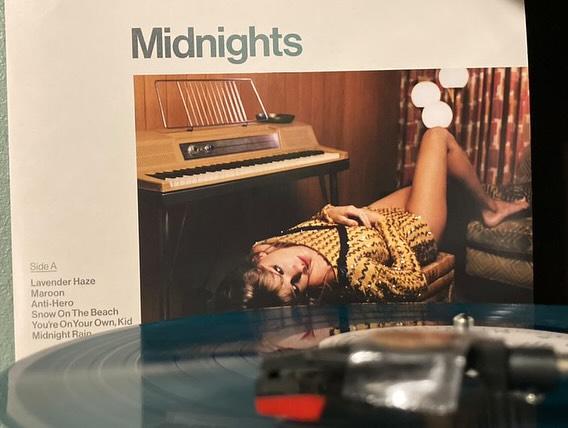To some of us, music is a big part of who we are. Whether one plays an instrument or is simply a laid-back fan of their favorite artist, the albums and songs they dedicate their time to mean a lot to them.
What we listen to can also say much about our characteristics, whether that be the rebellious messages of heavy metal or the energetic tracks of hip-hop. Perhaps even the opposite is true—the music itself doesn’t say anything, but instead, our more unexpected genre choices express a desire to wane from the mainstream path.
Regardless of whether someone integrates music as part of their identity or simply listen to whatever they find catchy, there’s simply no denying that music is a powerful art form. Throughout the years, not only have sounds and genres evolved, but the mediums in which people physically listen to music have drastically changed as well.
In 1948, Columbia Records released their 33-RPM 12-inch vinyl record, the first example of what we today call an LP. Although records had been around since the early 1900s, they were made of fragile material and produced poor sound quality with little standardization.
It only makes sense, then, that the introduction of this 12-inch vinyl entirely revolutionized the way consumers listened to music in the home.
Shortly after the release of the 12-inch LP came the 7-inch EP produced by RCA, designed to play singles. By 1963, we had the cassette, by 1982, the CD, and finally, in 1992, the world was revolutionized through MP3s, which could be played on a designated device or personal computer. This digital era of music eventually evolved into what it is known as today: a market oversaturated by streaming services and an on-demand catalog of nearly every song ever published.
Though instant streaming is undeniably convenient, it suffers the same disease as many other modern technologies—there’s a disconnect between the consumer and the product. Physical mediums provide some layer of linkage to the things a person owns. This could be a hint as to why vinyls have sold more copies this year than any year since 1988.
Take digital copies of movies and television shows, for example. On a frighteningly consistent basis, these pieces of entertainment are switched between streaming services, lack certain parts or even end up taken offline entirely.
Despite paying to use the product, you don’t own the content you’re consuming. That, to some people, is an understandably uncomfortable process. All of these same concepts can be applied to digital listening, and in a world of confusing copyright laws, the fear of losing access to favorite music is more justifiable than ever.
Combine all these concerns with the heavily optimized and hand-held reality of modern-day technology—the result is drab. What the average person is subjected to is a corporate and soulless experience in most portions of our lives—not only in music but through television, cashless transactions, the big-box supermarket stores on every corner, algorithms that analyze your every swipe, self-driving car and whatever else.
The goal of convenience has left tradition and the process of doing things completely out of the picture. There’s little downtime any longer, and it feels as if everything is a race, always on the upbeat.
This isn’t to say that all convenience is bad, honestly—I like convenience, but most people do. I’d go so far as to say I even love the ease of modern-day technologies. There’s a reason it’s the goal of so many different companies. But, there is a point where it all becomes overwhelming, and you drown in the sea of being coddled in everything you do.
Perhaps this is why vinyl is so popular again. A silent rebellion against the over-complication of everything, a return to being mindful. When spinning a record, there’s almost an obligation to finish it.
When so often, we put on music in the background or as an addition to some other task we’re doing, listening to vinyl or any other physical medium pushes us to listen to the music and nothing else. The investment in actually purchasing a record is warrant enough to choose the albums and songs that mean the most to people.
To some, it’s a tacky gimmick and a phase that’ll be out of style soon. And it’s understandable—the logic behind purchasing expensive albums to put on expensive equipment to listen to an objectively worse sound quality is… irrational. But maybe that’s the point. Perhaps collecting vinyl or anything else is a reminder of the control we have over our own lives.
